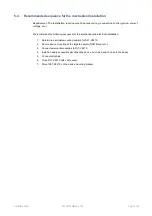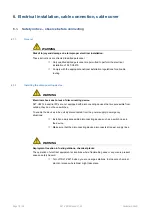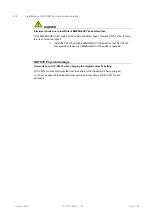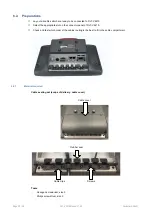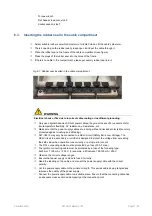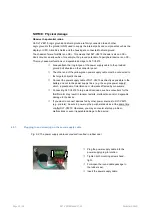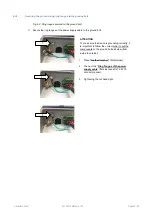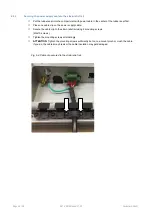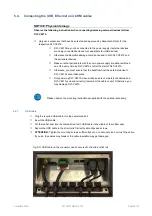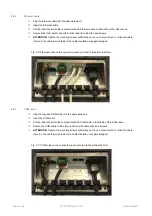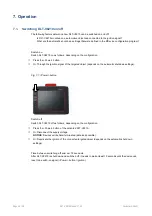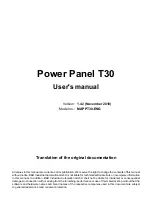
Advantech-DLoG
DLT-V6210 Manual V1.00
Page 13 / 56
Country-specific regulations
Example for Germany: In Germany according to regulations published in the gazette 89/2003 of the
RegTP (regulating body for telecommunications and mail, now: “Bundesnetzagentur”) - Federal Network
Agency for electricity, gas, telecommunications, post and railway - the maximum permissible transmitting
power, EIRP (Equivalent Isotropically Radiated Power), in the 2.4 GHz frequency band is set at 20 dBm
(100 mw).
Set the transmitting power of the Advantech-DLoG antenna so that the permitted EIRP limit value is
complied with.
Examples for worldwide:
Region
Regulatory authority
EU
EU Verification Notified Body V1.8.1 ETSI
China
CNCA-07C-031
Japan
Japan SDoC, Certificate
Taiwan
Taiwan Certification
Canada
Canada Certification Body
USA
USA Certification
Brazil
Brazil Certification and Homologation
Russia
Russian Certification
Argentina
Argentinian Certification, CNC
WARNING
Electromagnetic radio frequency energy can interfere with technical devices.
Some technical equipment in hospitals and aircraft is not shielded against radio frequency
energy.
Do not use DLT-V6210 in aircraft or hospitals without receiving prior
authorization.
Usage in both occasions is only permitted if such authorization has been
obtained.
DLT-V6210 industrial PCs can affect the functioning of implanted medical devices such as
pacemakers and cause them to malfunction.
Do not use DLT-V6210 near pacemakers.
Always keep a distance of at least 20 cm between a pacemaker and
DLT-V6210 to reduce the risk of interference.
Before using the device please obtain information about the use of the
device within certain areas (e.g. airports, hospitals, etc.) and also about
the respectively applicable regulations and obtain an approval for the
operation of the device, if necessary.
4.2.2.
Antenna solutions for use in Germany
The Advantech-DLoG antenna solutions are based on the prevailing IEEE 802.11 standard. This
standard allows wireless data transfer at rates from 1 Mbps to 54 Mbps (300 Mbps if using
IEEE 802.11n) using the 2.4 GHz and 5 GHz frequency band.

















